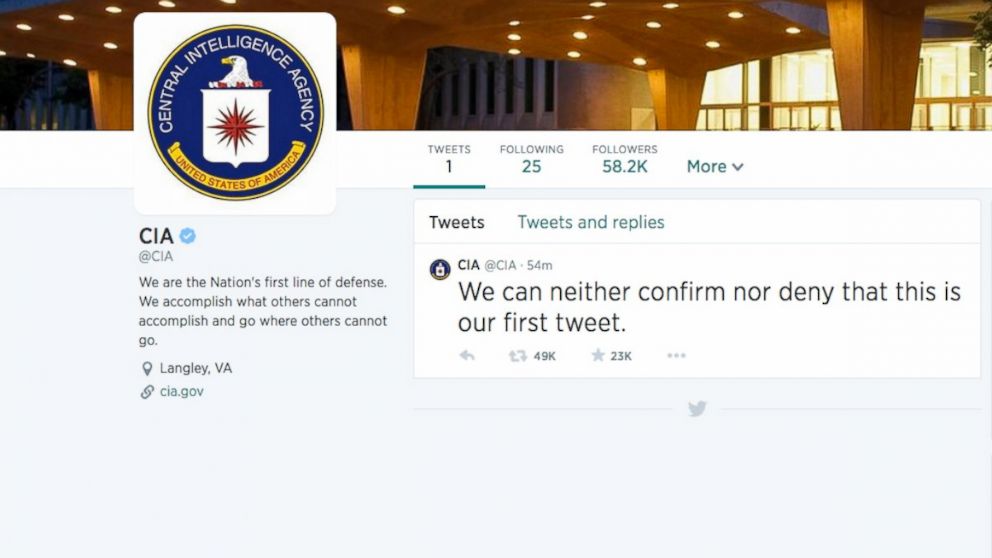The CIA's Secret History of the Phrase 'Can Neither Confirm Nor Deny'
The "Glomar response," in the CIA's first tweet, has become a staple of evasion.

June 6, 2014— -- It seems the Central Intelligence Agency has a keenly honed sense of irony.
The CIA chose the phrase "can neither confirm nor deny" to make its first foray into the Twittersphere today -- a wording that originated in the spy agency in 1975 during the height of the Cold War and has since become a staple of evasion, both in official circles and now even in pop culture.
Read More: Spy Tweets: CIA Joins Twitter, Facebook
The so-called "Glomar response" was created by the CIA in reaction to media inquiries about a covert agency program, which created a salvage vessel named the Glomar Explorer to recover a sunken Soviet submarine.
Glomar is a contraction of Global Marine, the company that the CIA commissioned to build the Glomar Explorer.
The award-winning public radio program Radiolab delved into the origins of the phrase earlier this year, producing a memorable podcast with the man who came up with the evasive wording, which was: "We can neither confirm nor deny the existence of the information requested but, hypothetically, if such data were to exist, the subject matter would be classified, and could not be disclosed."
By stating that the agency could "neither confirm nor deny" the existence of the covert program, the CIA avoided saying the program did not exist, which would have been a lie, and simultaneously it avoided revealing the existence of the program by confirming it, which would have tipped off the Soviet Union.
The tricky evasion has become the bane of watchdogs and journalists -- but its utility for those seeking to keep things on the QT has withstood the test of time, as evidenced by its proliferation, even among private companies and celebrities.




